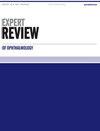泰国黄斑色素的光密度
IF 0.9
Q4 OPHTHALMOLOGY
引用次数: 0
摘要
摘要背景本研究的目的是测定泰国受试者的黄斑色素光密度(MPOD),并确定与其水平相关的因素。研究设计和方法本研究为横断面研究。120名健康眼睛参与者的240只眼睛使用VISUCAM500进行MPOD测量。收集了人口统计学和医学数据。Pearson相关系数分析了光密度总和(MPOD体积)与各种因素之间的关系。采用逐步多元回归分析MPOD及其影响因素。结果参与者的平均年龄为50.7±7.5岁。MPOD平均值为0.102±0.023密度单位。年龄(r=0.261,p<0.01)、女性(r=0.191,p<0.05)和补充叶黄素和玉米黄质(L/Z)的摄入量(r=0.168,p<0.05)与MPOD体积呈正相关。相反,正常血压(r=-0.182,p<0.05)与MPOD体积呈负相关。在本研究中,未观察到吸烟、体重指数、脂质状况和AMD家族史对MPOD值的影响。结论年龄、性别和服用L/Z补充剂是泰国受试者MPOD的重要预测因素。本文章由计算机程序翻译,如有差异,请以英文原文为准。
Macular pigment optical density in a Thai sample
ABSTRACT Background The aim of this study was to determine macular pigment optical density (MPOD) and identify factors that correlate with its level in Thai subjects. Research design and methods This research was a cross-sectional study. Two hundred and forty eyes of 120 participants with healthy eyes underwent MPOD measurement using VISUCAM 500. Demographic and medical data were collected. Pearson’s correlation coefficient analyzed the relationship between the sum of optical densities (MPOD volume) and various factors. MPOD and its influencing factors were analyzed by stepwise multiple regression. Results The mean age of the participants was 50.7 ± 7.5 years. The mean MPOD was 0.102 ± 0.023 density units. The factors age (r = 0.261, p < 0.01), female gender (r = 0.191, p < 0.05), and consumption of lutein and zeaxanthin (L/Z) supplement (r = 0.168, p < 0.05) were positively associated with MPOD volume. In contrast, normal blood pressure (r = – 0.182, p < 0.05) was negatively associated with MPOD volume. No relationship with smoking, body mass index, lipid profile, and family history of AMD on MPOD values was observed in this study. Conclusions Age, gender and consumption of L/Z supplement were found to be significant predictors of MPOD in Thai subjects.
求助全文
通过发布文献求助,成功后即可免费获取论文全文。
去求助
来源期刊

Expert Review of Ophthalmology
Health Professions-Optometry
CiteScore
1.40
自引率
0.00%
发文量
39
期刊介绍:
The worldwide problem of visual impairment is set to increase, as we are seeing increased longevity in developed countries. This will produce a crisis in vision care unless concerted action is taken. The substantial value that ophthalmic interventions confer to patients with eye diseases has led to intense research efforts in this area in recent years, with corresponding improvements in treatment, ophthalmic instrumentation and surgical techniques. As a result, the future for ophthalmology holds great promise as further exciting and innovative developments unfold.
 求助内容:
求助内容: 应助结果提醒方式:
应助结果提醒方式:


